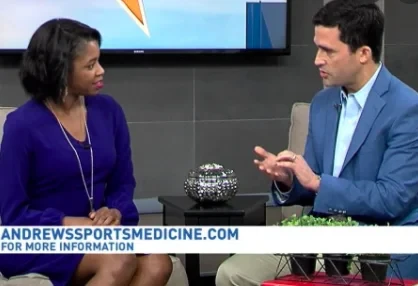
By: Ricardo E. Colberg, M.D.
What is a trigger finger?
Trigger finger is a common condition in patients who do repetitive gripping or flexing of their fingers and hand. The tendons that flex the fingers run under a ligament, the A1 pulley, which keeps the tendons in place. In some cases, the tendons can get swollen from inflammation and develop a nodule that starts catching and popping under the ligament. In severe cases, the tendon can get so swollen that it will get stuck and will not bend the finger anymore.
What are conservative treatments for a trigger finger?
Frequently, the patient is offered a course of hand therapy to try to restore the full range of motion of the finger. In addition, anti-inflammatory medications and a steroid injection may be offered to treat the pain and inflammation. Finger splints may also be offered to allow the tendon to rest.
Is there a “permanent fix” or a surgical option for a trigger finger?
For many years, the “permanent fix” was surgery through an open incision followed by a release of the A1 pulley so it would heal in a stretched position and take the pressure of from the finger, allowing the finger to bend again without getting stuck. However, an open release requires wound care, removing stitches a week after the procedure, risk of infection, and prolonged return to work due to the wound healing, up to 4 weeks for full gripping. There is also potential for complications from the surgical healing, including pain and thick scar tissue formation.
Now, there is a minimally invasive technique to do the same release that does not require a surgical incision. It is called a Percutaneous Trigger Finger Release Under Ultrasound Guidance. This procedure consists of injecting lidocaine locally to numb the area and releasing the A1 pulley with a needle under live ultrasound imaging. There is no incision with a scalpel so the recovery is much quicker with a much lower risk of infection. The patient can immediately bend the finger again afterwards. The patient will keep a band aid over the area for only 24 hours and does not have to worry about getting stitches removed.
In 3 days, the patient can resume light gripping, and can return to full gripping as soon as in ten days. Pain and scar tissue formation are minimal since the skin is not cut open. In addition, this procedure is cheaper than open surgery since it is done in the office and does not require paying for surgery center fees.
Download Trigger Release Overview
Pre-Procedure Instructions
1. Stop anti-inflammatory (NSAIDs) medications 3 days prior to procedure (e.g. ibuprofen, naproxen, etc;).
2. In some cases, you may need to stop blood thinners (e.g. Aspirin, Plavix, Coumadin, etc.) 3 days prior to procedure. You must discuss this with Dr Colberg, as well as your cardiologist or primary doctor and obtain approval. Other daily medications should be taken normally as directed.
3. Arrange for a friend or family member to provide transportation for you on the day of the procedure. Post-procedure anesthesia will interfere with your ability to drive.
Post-Procedure Instructions
1. Blood thinners (e.g. Aspirin, Plavix, Coumadin, etc.) may be resumed 24 hours after the procedure.
2. The band aid may be removed 24 hours after the procedure. Do no soak the hand in water for a prolonged period of time (i.e. swimming, jacuzzi, etc;) for three days.
3. Increased irritation in the affected area may occur. Ice the affected area three to four times per day for 15 minutes for the next three days. You may take Extra Strength Acetaminophen as needed for pain or the prescribed pain medication.
4. We encourage you to bend the fingers as tolerated during the day to stimulate the area to heal appropriately. Limit light gripping for 3 days and heavy gripping for 10 days to 2 weeks, as tolerated.
5. Please wear a finger night splint for the first two weeks. 6. If you develop fever, persistent redness and swelling at the site of injection, call Dr. Colberg’s office at (205) 939-3699. These may be a sign of infection.







